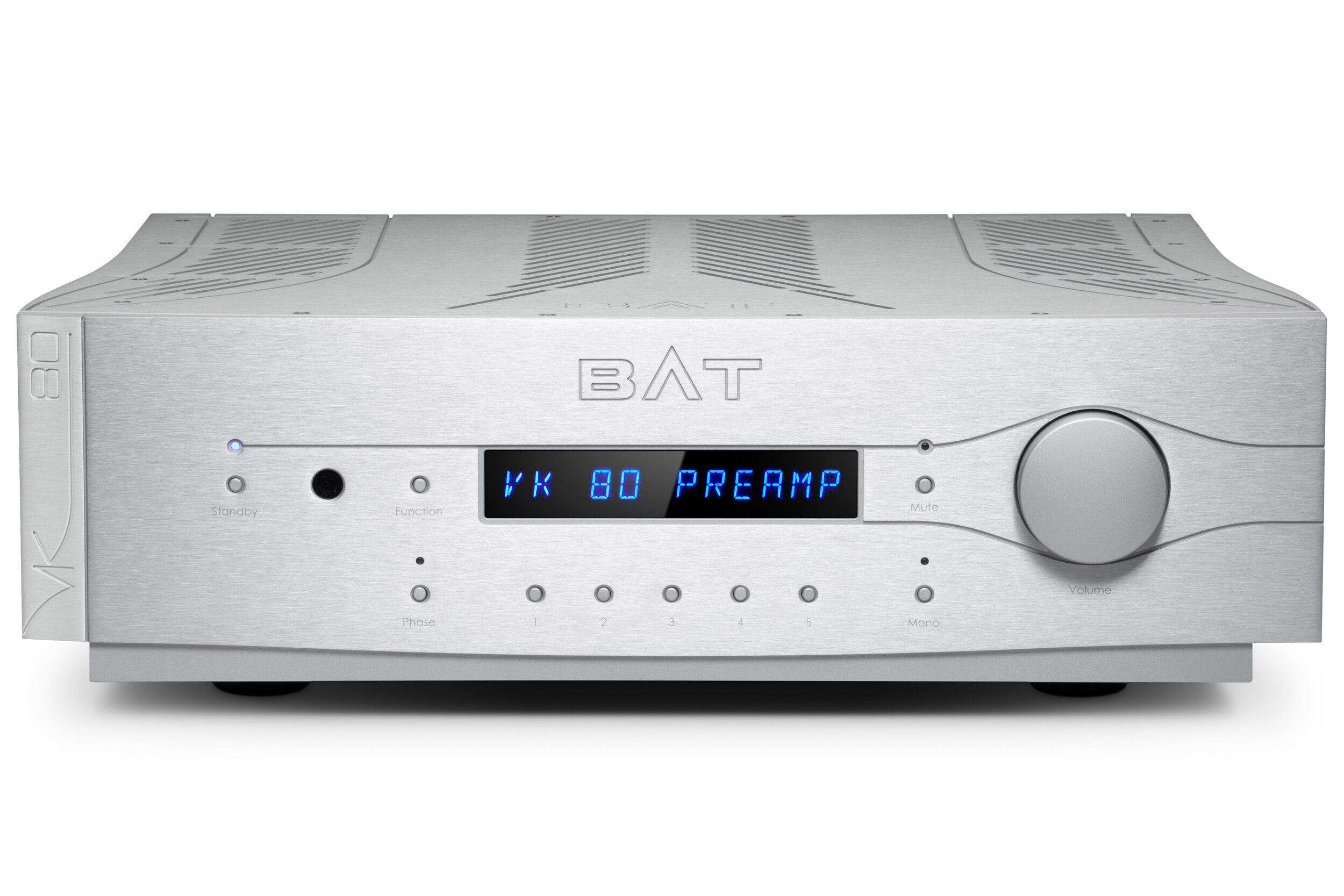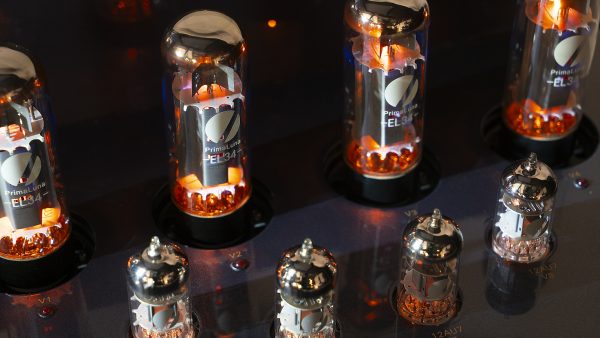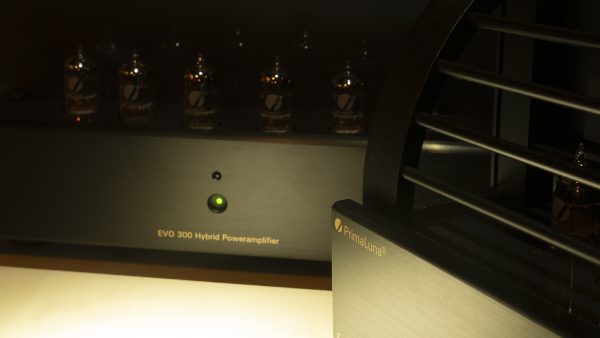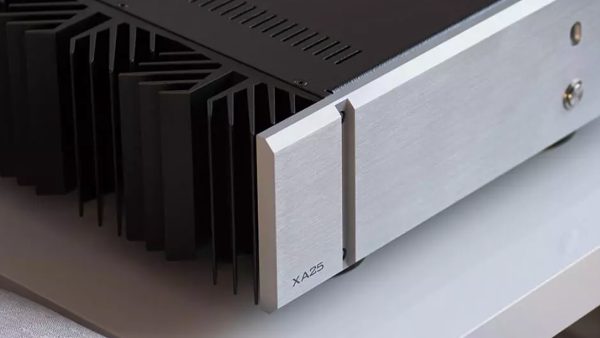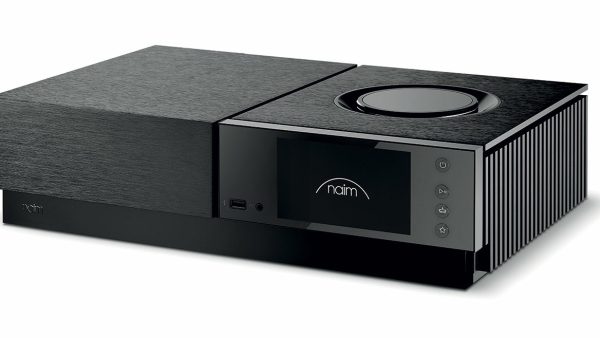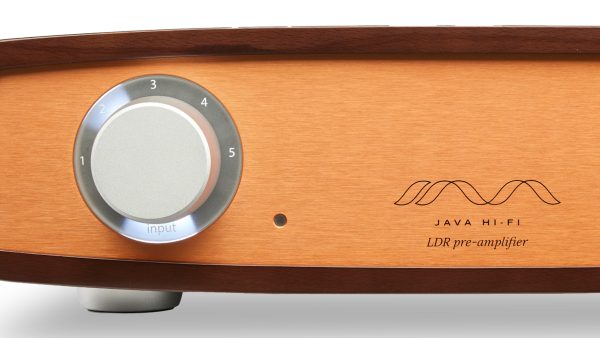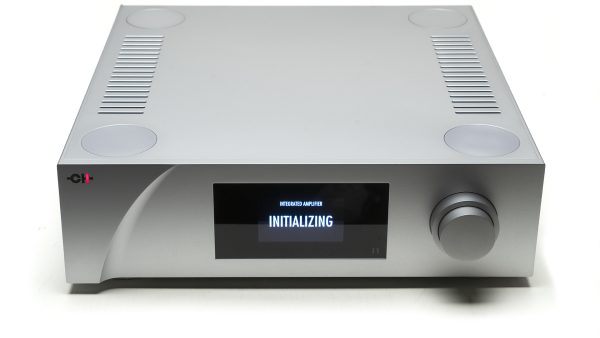Listening to Lou Reed’s haunting track “Vanishing Act” (from the Raven album), there’s an additional layer of vocal texture that is unmistakably great when played through the VK-80. This is the tube “magic” that so many people talk about. If you’ve never heard this, try it – call it up on whatever music streaming service you use and listen. Even if you aren’t a Lou Reed fan. The way the BAT preamplifier reveals every breath in this track is engaging. Really engaging. And aren’t you tired of listening to that “Sanctuary” track? Come on.
After using this preamplifier for a little over a year, my enthusiasm is greater than when it was unboxed. It’s easy to be overly smitten with a component after a few weeks/months, going through the routine tracks constantly called upon to evaluate things. That enthusiasm can be dampened when the rare opportunity comes to listen longer on a broader variety of system situations. Not this time.
I will go on record saying this is one of the most enjoyable tube preamplifiers I’ve ever used.
After owning several tube preamps from ARC, C-J, VAC, and a few others, the VK-80 brings much of what makes BAT’s $30,000 REX 3 preamplifier so engaging. That was the most exciting tube preamplifier I’ve ever experienced. The C-J GAT 2 is in the neighborhood, but if you put a gun to my head and told me to pick one, it would be the BAT. And the VK-80 is $10k.
Yes, this isn’t inexpensive by any stretch. However, the BAT’s performance and build quality are considerably better and higher than the average preamp in the $2,500 – $5,000 range. At least in terms of everything else we’ve had the opportunity to review. Whenever audio talk turns to diminishing returns, this preamplifier is a perfect example of a tipping point. This BAT delivers tremendous performance for the price asked. After having over a year to compare it to several other things, both more and less expensive – if I didn’t review gear for a living (and only listened a couple hours a day), this would be the one I’d buy.
The only reason I’m not buying the BAT VK-80 is that I have my system on about 12-18 hours a day, and I just don’t want to deal with replacing tubes at the rate that would require. Yet, in terms of sheer sonic bliss, it’s fantastic.
BAT has always had a unique voice in their tube amplification components. Where some of today’s current tube designs make an effort to expunge the “tubey-ness” from them, BAT achieves brilliance in the sense that the VK-80 has that inner detail and airiness that you expect from vacuum tubes, along with a lovely helping of tonal saturation, without ever sounding too warm, rolled off, or slow – dynamically. BAT gear has always had a big, bold, dramatic dynamic. Reviewer bias admitted – I love the sound of BAT gear. Always have. Older components have always had a bit of darkness to go with the drama, so think of older BAT gear like Batman and newer BAT gear like Superman. Come to the light, baby.
There is absolutely nothing that this preamplifier does wrong. The flagship REX 3 is quieter, more dynamic, allows even finer access to the most minute sonic details, and presents a larger three-dimensional soundfield. But that’s what you pay the extra $20k for. Unless you insert that REX 3 into a cost-no-object system, you might be able to live happily ever after with the VK-80. Now, you might be thinking, what about the VK-90 for $15k?
The VK-90 offers a more robust audio stage with six 6H30 tubes instead of the four in the VK-80. Again, more dynamic, more drive. The pull of the VK-90 is that it can be upgraded to REX 3 status, so if you’ve got dreams of a mega upgrade down the road, you’re halfway there with the VK-90. If you are building a $50k – $150k system, the VK-80 could easily fill your preamplifier requirements.
Flexible
The VK-80 is a one-box preamplifier, so it will only require a single rack space, and my experience with BAT preamplifiers is that they are much easier on tubes than something like an ARC preamplifier using the same tubes. With 6H30s costing about $50-70 each, that’s not a minor consideration. When BAT first brought the 6H30 to the audio world, the original Russian Reflector 6H30s were plentiful and reasonably priced. Now, a set of four will set you back about $1,500. But if you can find a set or two, buy them. They deliver a substantial, but for the most part, unobtanium difference. I still have a set, and they offer a significant sonic upgrade. To be fair, 98 percent of my listening was done with the stock tubes (because those are the ones you can get when it’s re-tube time), and I’m still thrilled with the VK-80. You can’t un-hear this, but it’s the stuff to try on a long-term review.
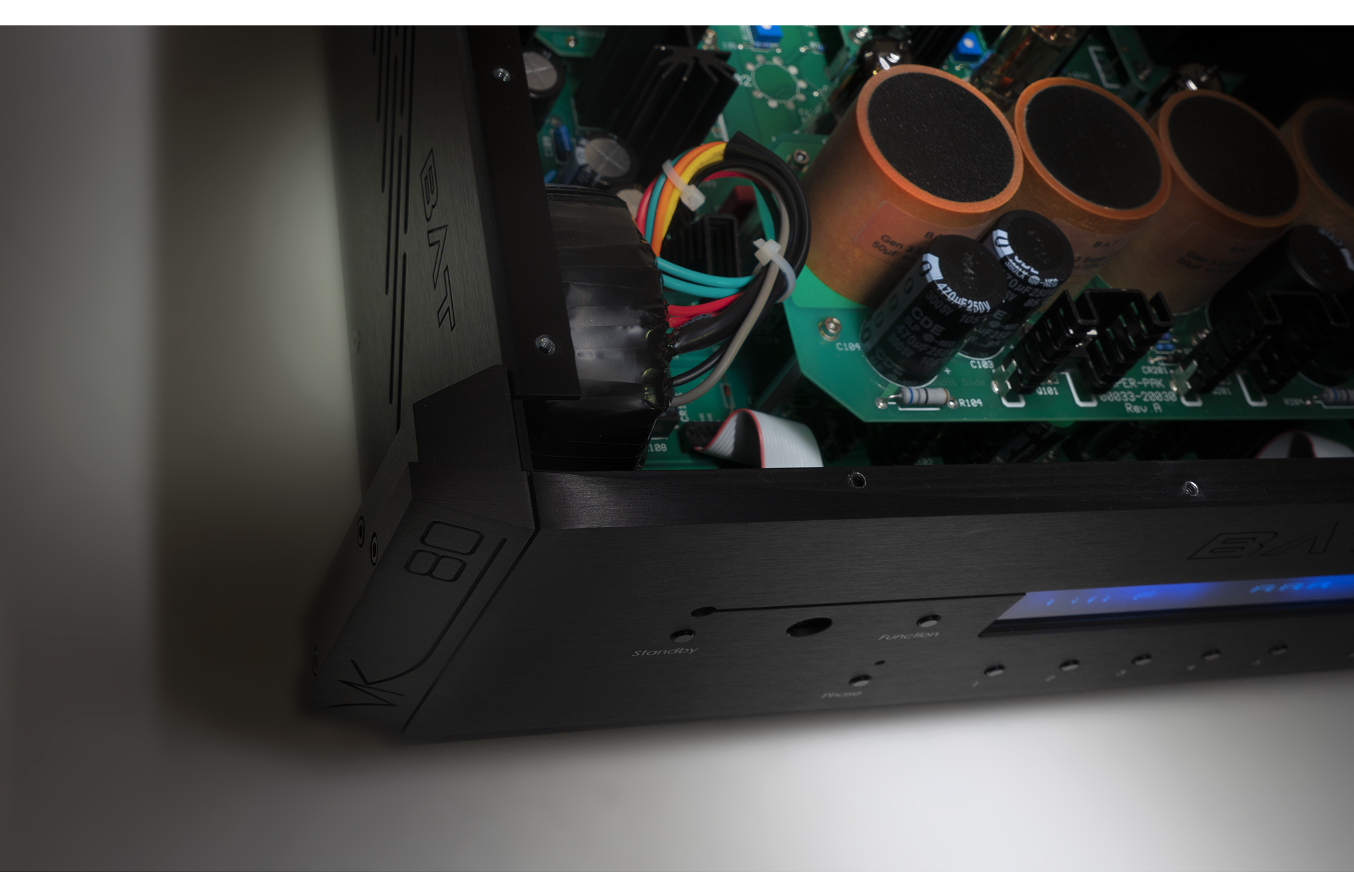
It’s worth mentioning that the original 6H30s have a much longer life than the current ones being produced. I managed almost 20,000 hours on a set in my Conrad-Johnson ACT2/series II preamplifier. Much like a pair of WE 300Bs at $1,500 a pair vs many of the others for $500 per pair, those NOS originals are awesome.
As a dual mono design, the VK-80 takes advantage of BAT’s widely acclaimed SuperPak capacitors to deliver maximum tonality and dynamics. For those saying, “Why so expensive?” keep in mind that BAT used to offer this as an upgrade—now, they are simplifying things by just making it one way. In the long run, this is better for everyone because if you were a legacy BAT owner, once you heard the Super Pak, you wanted it anyway. I salute BAT for eliminating selection anxiety!
Around the back, there are three RCA inputs and two balanced XLR inputs. A single pair of RCA outputs and a single pair of XLR outputs to connect to your power amplifier of choice is all that is supplied. While the VK-80 is a fully balanced preamplifier, it uses high-quality output transformers rather than being capacitor-coupled to the outputs. This may add the last few molecules of smoothness to the output sonics, but this preamplifier lacks nothing in transparency or three-dimensional resolution.
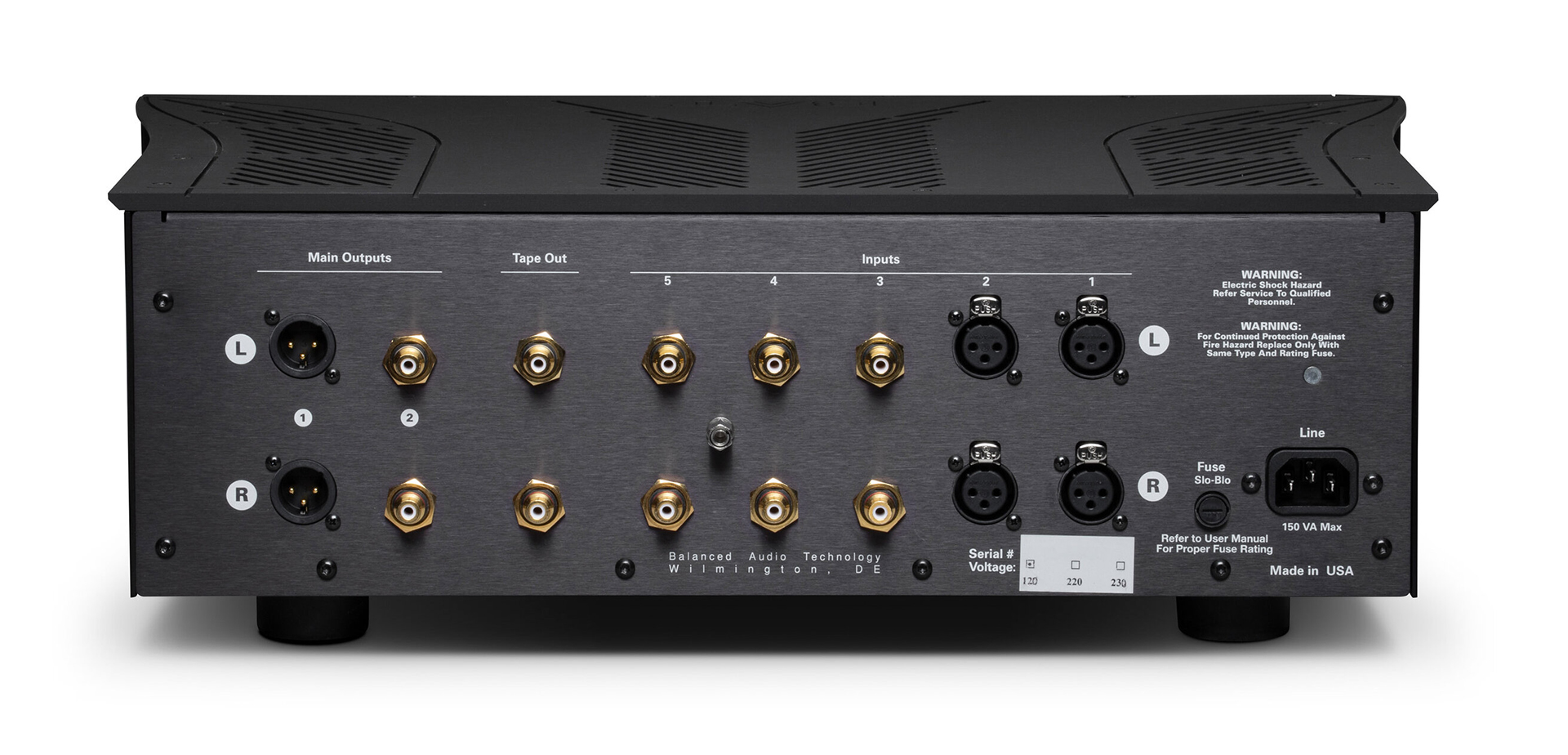
BAT claims an output noise level of -96dB. We don’t measure things, but even with an ear right up to the horn tweeters in the 97dB/1-watt Volti Razz speakers, there’s no tube noise coming through. This is a quiet, quiet, quiet tube preamplifier.
Further system synergy
During the VK-80s stay, the matching BAT VK-80t power amplifier (also $10,000) was here, with some overlap of the REX 3 components, so it was easy to compare the top-of-the-line BAT preamplifier with the entry-level model and use both preamplifiers with each power amplifier.
An all-BAT amplification chain delivers a powerful musical experience, to be sure, yet their components always play well with other brands and types of amplification. Thanks to the balanced and single-ended outputs, the VK-80 spent a fair amount of time connected to everything from a vintage Nakamichi 620 power amplifier all the way up to the Pass Labs XS 300 monos. If you do not have a BAT power amplifier, I wouldn’t hesitate pairing the VK-80 up with anything else.
Should you be upgrading from a 10-20-year-old BAT preamplifier, you’ll find much of the musical essence that makes up what you are listening to now, and no doubt drew you to the brand in the first place. There hasn’t been a change in sonic priorities, just solid refinement over the years.
Back in 1995, Stereophile magazine made it a point to say that the original BAT VK-5 preamplifier possessed “truth of timbre” (actually, this quote is attributed to Sam Tellig – my all-time favorite Stereophile columnist), and this has only gotten better. Because of this review, I ended up selling my C-J preamplifier at the time and jumping on the BAT bandwagon for a few years. Fortunately, one of my audio buddies still has his VK-5, and a few sets of tubes later, it still functions great. So, it was easy to borrow it for a weekend’s listening and see just how far things have progressed. This particular model is an original VK-5. The VK-5 would later become the VK-5i, ultimately the VK-5SE.
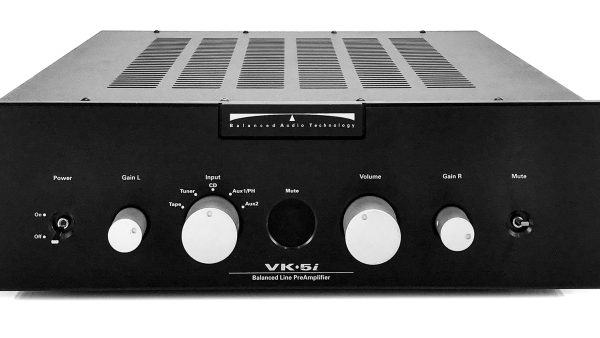
Everything I remember about the VK-5 is still solidly in place—big dynamics, expressive tonality, and a sound like nothing else. Back in 1995, a BMW felt one way, a Mercedes-Benz very different, and an Audi completely in its own space. As it was with preamplifiers, C-J had their sound, and ARC had a completely different outlook on how music should reach our ears. Then BAT hit the streets with their vision, and it was bold.
However, that boldness had a bit of darkness to it. Doesn’t everything? Yet, with the right music, the VK-5 delivers a presentation that still stuns. The heaviest rock music, the most bombastic classical tracks, and some of the deepest, punchiest electronica still sound engaging AF through the VK-5.
The current BAT gear preserves every bit of its initial magic yet has made the VK-80 more transparent, dynamic, and resolving through the midband and upper top range, giving nothing else up. The refined result is a world-class preamplifier for $10k.
More Listening
Most manufacturers (and understandably so) need to get their gear back from reviews asap, so it’s a rare treat when they can park something for an extended time. Rod Stewart once said in a song, “She was alright for an hour, she was alright for a day, but it did not last to the weekend, so I packed my things and moved right away.” Some components are like that – you hear them at a dealer or a hifi show and are taken in by their initial spell. Yet, the more time you spend with them, the quicker that spell wears off. Hmmm, they chose those six demo tracks for good reason.
Not so the VK-80. The late Pee-Wee Herman once said, “I love my toys, but I don’t want to marry them.” If you tend to be a more monogamous audiophile who only makes upgrades once in a while – this is a preamplifier I think you could live with for a long time. Perhaps forever. I know I could. After thousands of tracks listened, I never wanted to put another preamp in the system. So in this case…
The VK-80 does an incredible job with top-notch recordings, yet it unpacks poorly recorded, dense recordings with equal finesse. A recent listening session with Chris started with the Monkees. I go here to see what any component can accomplish with a terrible recording. The entire Kiss catalog is on that list, as is nearly all the Todd Rundgren records, and I know you have your favorite tunes that, despite being poorly recorded, you love just the same. The VK-80 goes a long way in making a wider range of your music collection more enjoyable and engaging.
Again, the most significant differences between the first VK-5 and today’s VK-80 are all differences in refinement. Bass is still deep and heavy-hitting, yet now that critical area of upper mid-bass that contributes heavily to the weight of the presentation is tighter, faster, and more well-defined. It’s now much easier to feel the delicacy of plucked strings when listening to an artist play acoustic bass and the drive of the electric bass as well.
This effect is not subtle anywhere in the frequency range. If the VK-80 were a pair of speakers, think of a speaker with the delicacy through the midband of a pair of Quad 57s, but the sheer dynamic slam of a pair of Focal Grande Utopias. It’s hard to believe that BAT makes two models above this – but they do.
Final points
In addition to the improved electrical performance over 30 years, BAT has really stepped up their industrial design game. These new pieces are stunning on the rack (also available in silver) and have a heft that many similarly priced components lack. And I salute Victor at BAT for not making the logo huge. This is a personal thing that I always appreciate as a design professional. It has nothing to do with the sound, but I’ve always maintained that the best products in every realm let performance convey the message rather than a massive logo on the front or top panel. BAT components always look great on a rack, and they do not draw too much attention to themselves.
While we’re talking ergonomics, I also really like the layout of the buttons, and that the display is large enough to read from across the room. For quite some time now BAT has always let you label your inputs via the menus – which may not be important to some, but really handy if you’re moving gear around a bit.
Yes, $10k is a lot for a preamplifier. More than likely, this is not where you are going to start, so you’ll probably be moving something else along to put the VK-80 on your rack. So it’s not as big of a jump as you might think. There’s a subtle but major shift in components at this level of sonic performance provided by the VK-80: it takes you to a place that you stop focusing on the gear.
That’s what the world’s finest components, regardless of price, accomplish. And that’s what the BAT VK-80 brings to the table. It delivers a level of musical involvement that might be the place you can call it a day. If not, there’s still the VK-90 and REX 3. I wouldn’t be surprised if a number of VK-80s will be around 30 years from now, just like my friend’s VK-5 is. This is one I suspect you will not tire of.
And that makes the VK-80 a more than worthy Exceptional Value Award recipient.
The BAT VK-80
$10,000
